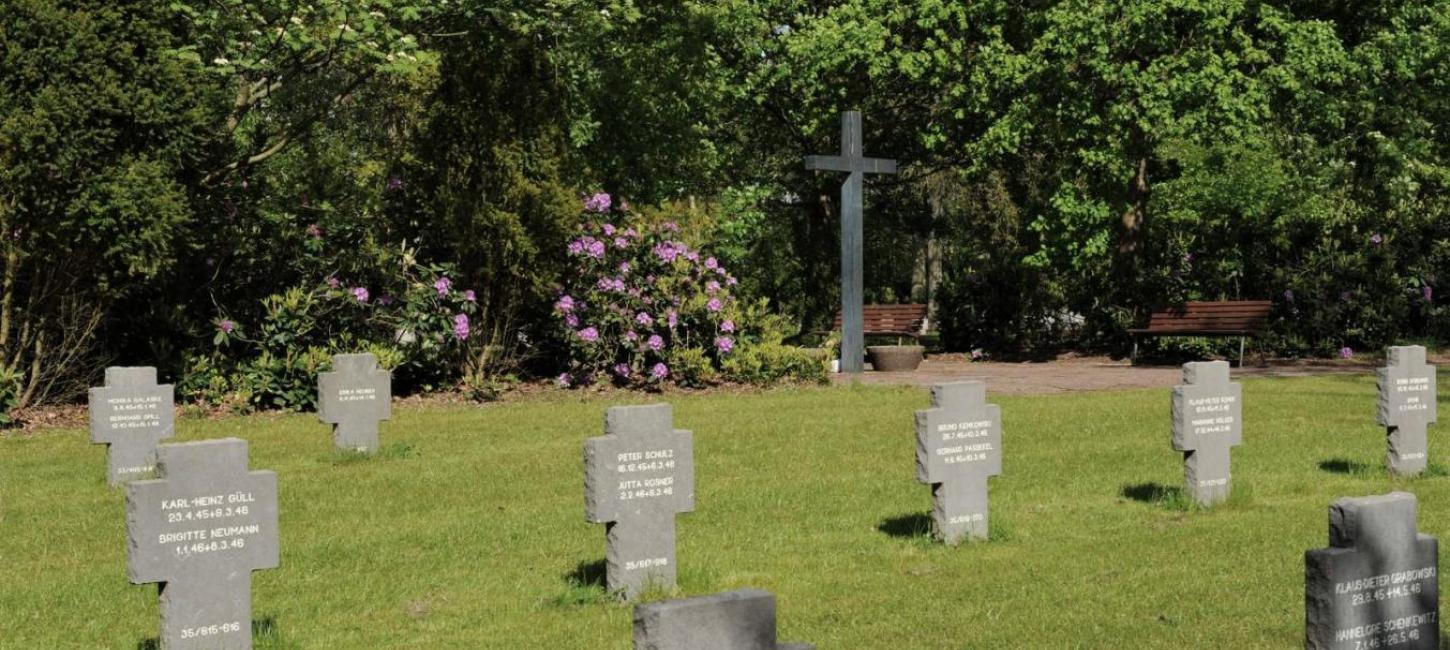
Post-war era – Refugees and mine clearing
At the end of WWII, approximately 350,000 German refugees arrived in Denmark, and more than 200,000 of them remained in Denmark after the liberation, many of them in refugee camps at Oksbøl, which could accommodate approximately 35,000.
Flugt– the Refugee Museum of Denmark tells the story of the German refugees and refugees through the ages. Outside the museum is an audio tour route along the camp’s original paths, where you can experience camp life and meet its residents – including in Theatre Oxbøl.
Unfortunately, the mortality among the refugees was high – especially among young children. This is evidenced by the refugee churchyard in Oksbøl.
In addition to the German refugee camp in Oksbøl, the Danish Red Cross had a camp for Soviet and other Eastern European refugees until 25 August 1945, located in the Kallemærsk Hede shooting grounds, so it is rarely accessible.
On Jutland's west coast, 1,500,000 mines were laid. On the stretch from Esbjerg to Nymindegab alone, 620,000 mines (40% of all mines in Denmark) were laid, of which 75,000 were laid on Skallingen. The remaining German soldiers were responsible for clearing the mines. This cost many lives, and many were severely wounded.
On 1 October 1945, the mine clearing was officially completed. A few complicated fields remained, including on the Skallingen Peninsula south of Blåvand, where a field with approximately 11,000 mines was abandoned. After a new clearing in 2021, the area was again declared safe.